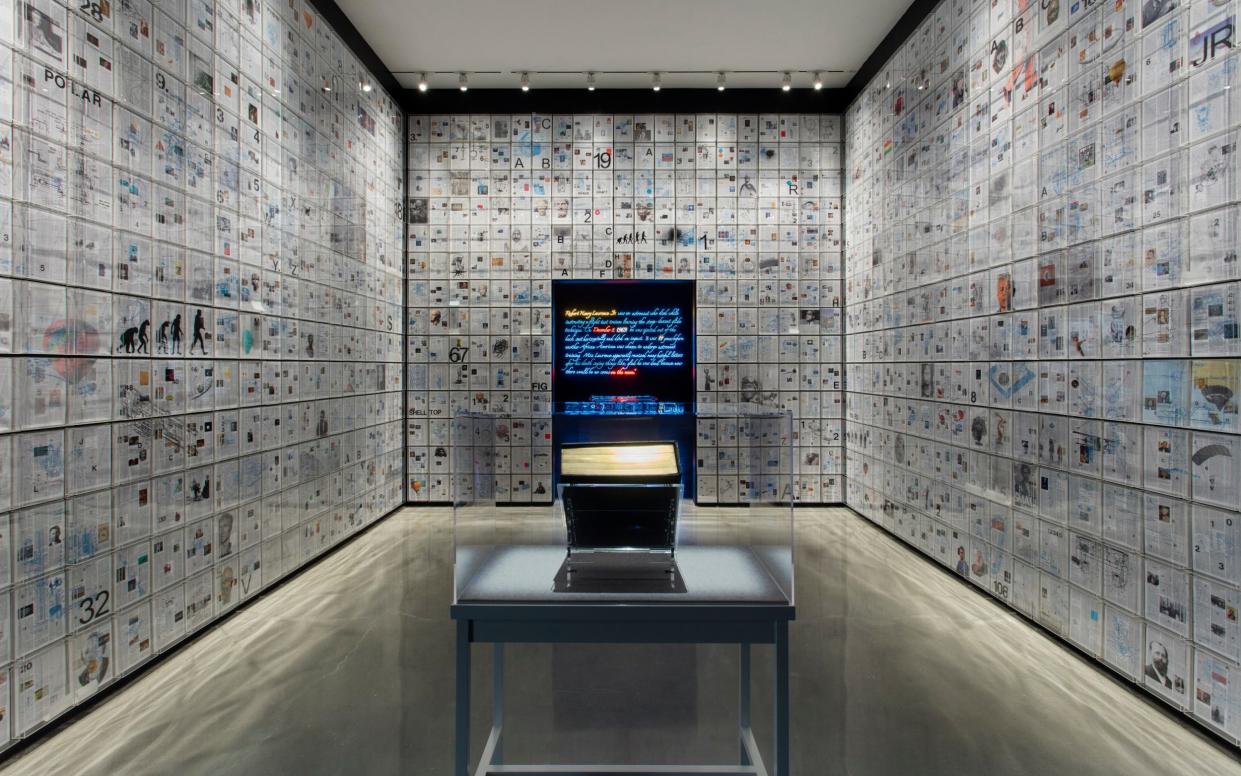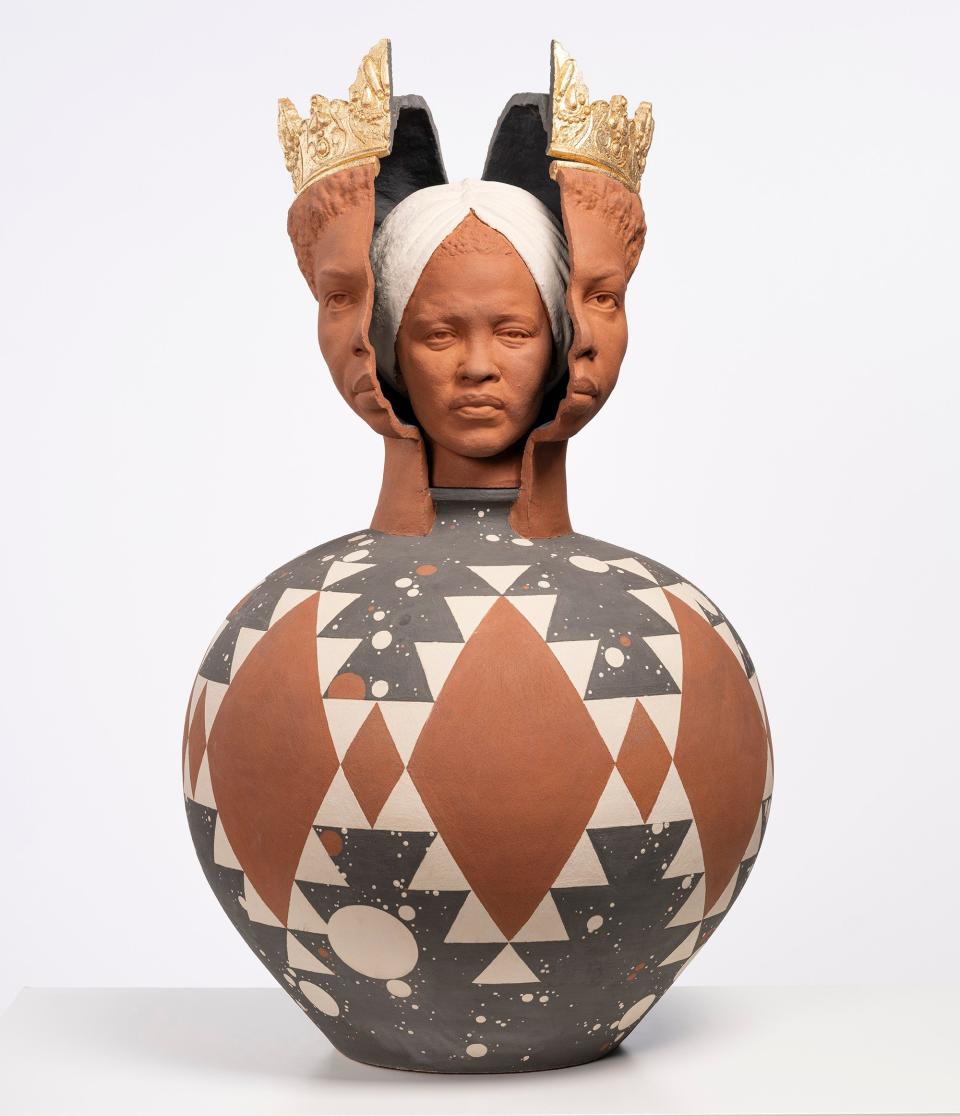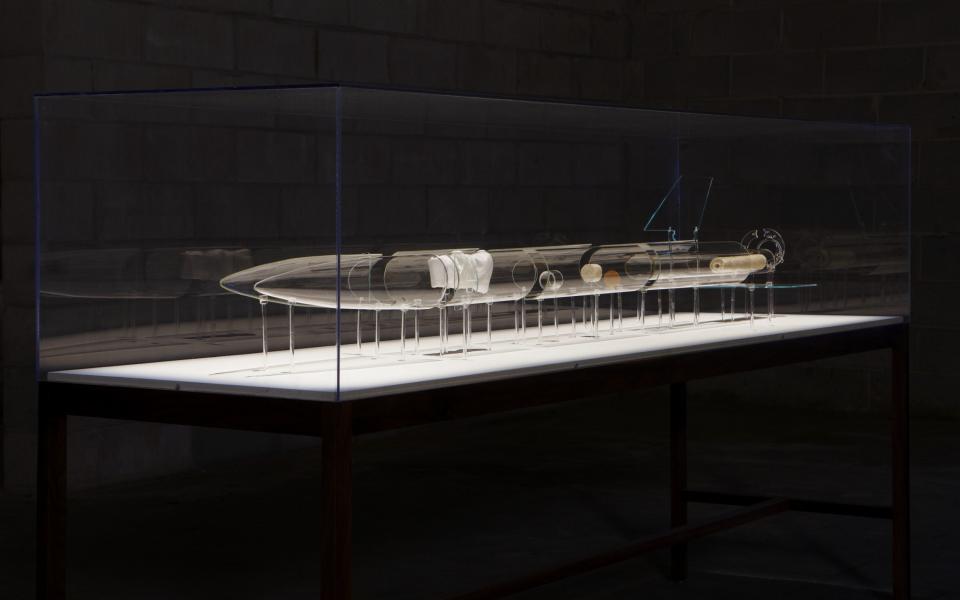Tavares Strachan, Hayward Gallery, review: monuments to black history that raise awkward questions

While activists have pulled down statues to old white colonialists, Tavares Strachan prefers to raise monuments to overlooked and forgotten figures of black history. Outside the Bahamian artist’s Hayward retrospective is a huge, sculpted head, like a ruined fragment of an even bigger colossus, of the 20th-century pan-Africanist Marcus Garvey, who dreamed of returning the black diaspora to a politically united Africa.
It’s one of the more bombastic works in this survey of Strachan’s reflections on the vexed question of how history has made visible (or invisible) the story of black people. Inside is another enormous head is of Harriet Tubman, the African American woman who organised the “underground railroad”, getting black people out of the Southern slave states to the north. Elsewhere, from a patterned terracotta urn emerges the bust of Jamaican entrepreneur and nurse Mary Seacole, who, among many intrepid ventures, tended British troops in the Crimean war.
Seacole reappears upstairs, as one of a three sculptures in which the busts of notable figures – alongside poet Derek Walcott and singer Nina Simone – are mounted on brass stands so that they face into the back of African and New Guinea carved masks, mounted before them. The affirmation of the deep historical roots of black culture, however, throws up awkward questions about how contemporary ideas about racial division and inequality tend to see racial groups as intrinsically defined by ancient history rather than current politics.

Sweeping everything into a catch-all black identity can become trite. Another ceramic urn is topped with the likeness of the African Roman emperor Septimus Severus, his head spilt open to reveal the bust of Steve Biko, the South African anti-apartheid campaigner killed by government agents in 1977. It’s hard to know what, other than race, connects Septimus – emperor of a society which owned slaves yet would have understood little of modern racial concepts – with Biko, battling the last bastion of colonial racism in Africa.
But in other works Strachan offers more complicated, open-ended reflections on past, present and future. Space flight is a recurring motif, from his large historical collage-canvases, to the solid gold statuette and the extraordinary, hanging neon skeleton that recall Robert Henry Lawrence Jr, first black US astronaut, mission-ready but killed in training in 1967. Strachan had a version of the statuette fired into orbit with a satellite launch in 2018.

It’s these elaborate, quixotic conceptual projects – Strachan’s establishment of the Bahamian version of Nasa, his own polar expedition to remember Matthew Henson, African American member of Robert Peary’s team that first reached the North Pole – that grapple most imaginatively with what black people and ex-colonial societies might demand of the future, even if these visions of space exploration and colonisation carry their own political ambiguities.
The standout work is the room-sized Encyclopedia of Invisibility, a dizzying, wall-to-ceiling, decade-long accumulation of Britannica-like entries, dedicated to people, things and concepts ignored by mainstream history. It an uneven but thought-provoking show, balanced on conflicting sentiments – stridently acknowledging the history of the black diaspora, while shadowed by the sense that one might transcend race altogether. For race, eventually, to become invisible.
Tavares Strachan: There Is Light Somewhere is at the Hayward Gallery, London SE1, until September 1

 Yahoo News
Yahoo News 
